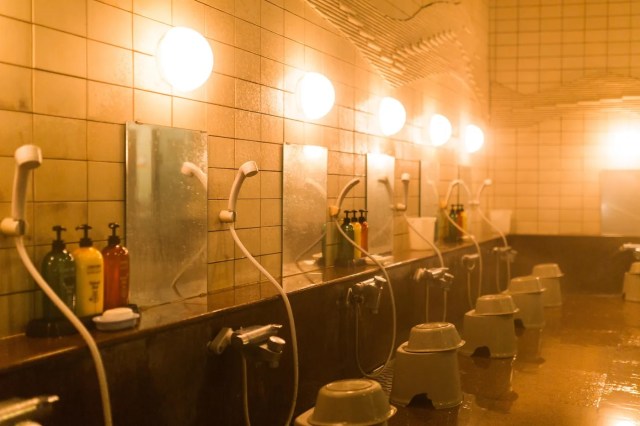
It was a rough year for Japan’s non-onsen bathhouses, but a comeback might be on the way.
Onsen (hot springs) have been part of Japanese culture for centuries, but they’ve been seriously surging in popularity over the past 20 years. At the same time that there’s an onsen renaissance going on, though, Japan’s sento, non-hot spring public baths located in urban or suburban neighborhoods, feel like they’re gradually fading away.
Statistics largely back this up. In 2006, Tokyo still had a total of 963 sento, 873 in the 23 wards that make up the most populous part of the capital and 90 farther out from the city center. By 2020, nearly half of them had closed, leaving just 499 Tokyo sento still in operation (453 in the 23 wards, 46 elsewhere).
The biggest reason, of course, is that up until a few generations ago reliable indoor plumbing was a bit of a luxury for Japanese homes, but now it’s pretty much a given. Aside from the lowest of low-rent properties, pretty much every apartment in Tokyo nowadays, no matter how small, still has a shower and modestly sized tub. Regularly stopping by the local sento is no longer the grooming and hygiene requirement it once was, and that slide towards non-necessity has been going on for a long time.
But if onsen are more popular than ever, why aren’t sento better able to ride their coattails? Primarily because of atmosphere and amenities. Many onsen are located in picturesque mountain locales with attached restaurants, lounges, or lodgings. Hot spring facilities also often offer rotenburo, open-air tubs, or kashikiriburo, private tubs that can be rented for couples or families to use together.
By comparison, visiting a sento is usually a much more bare-bones bathing experience. Instead of an actual alpine view from the tub, you’re likely to have a humble, if picturesque, mural or mosaic of Mt. Fuji on the wall. As for refreshments, a vending machine selling Pocari Sweat and bottled milk, or maybe ice cream if you’re lucky, is about all you can reasonably expect. If a trip to an onsen is like treating yourself to the works at a fancy salon, one to a sento is like going to the barber shop, a nice but very low-key form of relaxation.
▼ A sento we visited
Then there’s the boost onsen get from the purported health benefits of their waters. Different springs claim different effects from their minerals, but many are said to beautify your skin and improve your circulatory system. It’s somewhat nebulous how true these claims are, but there’s a broad social attitude that soaking in a hot spring isn’t just relaxing, but healthy too, which is a reputation sento don’t enjoy to nearly the same degree.
However, all hope might not yet be lost for Tokyo’s public baths. Yes, 2020 marked the 14th straight year the capital’s number of public baths decreased, with 21 closing their doors. 2020 also saw a decrease in the average daily number of customers per sento, which dipped to 143 compared to 144 in 2019. Considering the multiple pandemic-related states of emergency that were declared in Tokyo during 2020, though, that miniscule decrease suggests that 2020 would have seen an uptick in daily customers per public bath had life been going on as usual. As a matter of fact, the 144 customers per day for Tokyo sento in 2019 was the sixth annual increase in a row, after dropping to a low of 119 in 2013.
There’s actually been a push among some people in Japan to preserve and promote sento culture in recent years, appealing to both the sense of nostalgia of those who grew up when they were more common and a retro kitsch among people born more recently. That said, the per-sento customer increase is being more or less offset by the smaller total number of sento. Even with a citywide 10-yen price increase for sento admission set to take effect next month, prices for adult in Tokyo will still be just 480 yen (US$4.35), and hopefully they can secure enough support to stay in business, because if and when Tokyo’s public baths go away entirely, they’re not likely to come back.
Source: Tokyo Metropolitan Government via IT Media, Tokyo Metropolitan Government (2)
Top image: Pakutaso
Insert images ©SoraNews24
● Want to hear about SoraNews24’s latest articles as soon as they’re published? Follow us on Facebook and Twitter!
Follow Casey on Twitter, where hitting the sento after the gym was part of his Tokyo college routine.


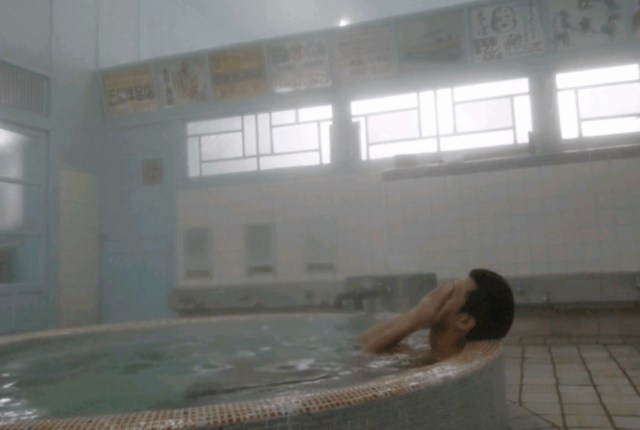
 Need a soak? Amazing interactive map lists every public bath and day-use hot spring in Tokyo
Need a soak? Amazing interactive map lists every public bath and day-use hot spring in Tokyo Apartments with no bath or shower rising in popularity among young Tokyoites, report says
Apartments with no bath or shower rising in popularity among young Tokyoites, report says Onsen in Nagano will now welcome foreigners with tattoos, as long as they patch ’em up
Onsen in Nagano will now welcome foreigners with tattoos, as long as they patch ’em up Miniature sento bathhouse range is this season’s must-buy gacha capsule toy collection
Miniature sento bathhouse range is this season’s must-buy gacha capsule toy collection McDonald’s new Happy Meals offer up cute and practical Sanrio lifestyle goods
McDonald’s new Happy Meals offer up cute and practical Sanrio lifestyle goods All-you-can-drink Starbucks and amazing views part of Tokyo’s new 170 meter-high sky lounge
All-you-can-drink Starbucks and amazing views part of Tokyo’s new 170 meter-high sky lounge Studio Ghibli glasses cases let anime characters keep an eye on your spectacles
Studio Ghibli glasses cases let anime characters keep an eye on your spectacles Super Nintendo World expansion gets delayed for several months at Universal Studios Japan
Super Nintendo World expansion gets delayed for several months at Universal Studios Japan Beautiful Sailor Moon manhole cover coasters being given out for free by Tokyo tourist center
Beautiful Sailor Moon manhole cover coasters being given out for free by Tokyo tourist center The oldest tunnel in Japan is believed to be haunted, and strange things happen when we go there
The oldest tunnel in Japan is believed to be haunted, and strange things happen when we go there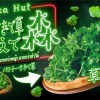 Pizza Hut’s new coriander pizza contains more cilantro than ever before!
Pizza Hut’s new coriander pizza contains more cilantro than ever before!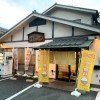 Eating Japanese katsudon once served in police interrogation rooms
Eating Japanese katsudon once served in police interrogation rooms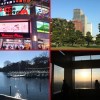 10 of our absolute favorite places to spend a day in Tokyo
10 of our absolute favorite places to spend a day in Tokyo Want big breasts? Japanese cosplayer shows how to boost your bust in seconds
Want big breasts? Japanese cosplayer shows how to boost your bust in seconds Disney princesses get official manga makeovers for Manga Princess Cafe opening in Tokyo
Disney princesses get official manga makeovers for Manga Princess Cafe opening in Tokyo More foreign tourists than ever before in history visited Japan last month
More foreign tourists than ever before in history visited Japan last month Starbucks reopens at Shibuya Scramble Crossing with new look and design concept
Starbucks reopens at Shibuya Scramble Crossing with new look and design concept Beautiful new Final Fantasy T-shirt collection on the way from Uniqlo【Photos】
Beautiful new Final Fantasy T-shirt collection on the way from Uniqlo【Photos】 Is the new Shinkansen Train Desk ticket worth it?
Is the new Shinkansen Train Desk ticket worth it? Foreign English teachers in Japan pick their favorite Japanese-language phrases【Survey】
Foreign English teachers in Japan pick their favorite Japanese-language phrases【Survey】 Japanese convenience store packs a whole bento into an onigiri rice ball
Japanese convenience store packs a whole bento into an onigiri rice ball We try out “Chan Ramen”, an underground type of ramen popular in the ramen community
We try out “Chan Ramen”, an underground type of ramen popular in the ramen community Studio Ghibli releases Kiki’s Delivery Service chocolate cake pouches in Japan
Studio Ghibli releases Kiki’s Delivery Service chocolate cake pouches in Japan Japan’s bone-breaking and record-breaking roller coaster is permanently shutting down
Japan’s bone-breaking and record-breaking roller coaster is permanently shutting down New definition of “Japanese whiskey” goes into effect to prevent fakes from fooling overseas buyers
New definition of “Japanese whiskey” goes into effect to prevent fakes from fooling overseas buyers Our Japanese reporter visits Costco in the U.S., finds super American and very Japanese things
Our Japanese reporter visits Costco in the U.S., finds super American and very Japanese things Studio Ghibli unveils Mother’s Day gift set that captures the love in My Neighbour Totoro
Studio Ghibli unveils Mother’s Day gift set that captures the love in My Neighbour Totoro Foreign passenger shoves conductor on one of the last full runs for Japan’s Thunderbird train
Foreign passenger shoves conductor on one of the last full runs for Japan’s Thunderbird train Domino’s Japan now sells…pizza ears?
Domino’s Japan now sells…pizza ears? New Japanese KitKat flavour stars Sanrio characters, including Hello Kitty
New Japanese KitKat flavour stars Sanrio characters, including Hello Kitty Kyoto creates new for-tourist buses to address overtourism with higher prices, faster rides
Kyoto creates new for-tourist buses to address overtourism with higher prices, faster rides Sales of Japan’s most convenient train ticket/shopping payment cards suspended indefinitely
Sales of Japan’s most convenient train ticket/shopping payment cards suspended indefinitely Sold-out Studio Ghibli desktop humidifiers are back so Totoro can help you through the dry season
Sold-out Studio Ghibli desktop humidifiers are back so Totoro can help you through the dry season Japanese government to make first change to romanization spelling rules since the 1950s
Japanese government to make first change to romanization spelling rules since the 1950s Ghibli founders Toshio Suzuki and Hayao Miyazaki contribute to Japanese whisky Totoro label design
Ghibli founders Toshio Suzuki and Hayao Miyazaki contribute to Japanese whisky Totoro label design Doraemon found buried at sea as scene from 1993 anime becomes real life【Photos】
Doraemon found buried at sea as scene from 1993 anime becomes real life【Photos】 Tokyo’s most famous Starbucks is closed
Tokyo’s most famous Starbucks is closed One Piece characters’ nationalities revealed, but fans have mixed opinions
One Piece characters’ nationalities revealed, but fans have mixed opinions We asked a Uniqlo employee what four things we should buy and their suggestions didn’t disappoint
We asked a Uniqlo employee what four things we should buy and their suggestions didn’t disappoint Princesses, fruits, and blacksmiths: Study reveals the 30 most unusual family names in Japan
Princesses, fruits, and blacksmiths: Study reveals the 30 most unusual family names in Japan Bathing with Pokémon? Healing species’ powers tapped for Pokémon Recovery public baths in Japan
Bathing with Pokémon? Healing species’ powers tapped for Pokémon Recovery public baths in Japan A guide to public bathhouses, the newest hot spot for tourists in Tokyo
A guide to public bathhouses, the newest hot spot for tourists in Tokyo 18 awesome overnight hot spring trips from Tokyo, and a quiz to help pick the best one for you
18 awesome overnight hot spring trips from Tokyo, and a quiz to help pick the best one for you Tokyo likely to reduce age limit on kids in opposite-sex public baths, report says
Tokyo likely to reduce age limit on kids in opposite-sex public baths, report says New onsen facility in the heart of Tokyo’s business district to be ready for Olympics
New onsen facility in the heart of Tokyo’s business district to be ready for Olympics Public baths in Japan add some extra fun with hundreds of rubber duckies
Public baths in Japan add some extra fun with hundreds of rubber duckies Famous hot springs of Beppu now offering portable inflatable onsen with authentic Beppu water
Famous hot springs of Beppu now offering portable inflatable onsen with authentic Beppu water How not to bathe at a public bathing facility in Japan
How not to bathe at a public bathing facility in Japan Government begins study into tattoo bans in public baths
Government begins study into tattoo bans in public baths The 10 best hotel hot springs in Japan, as chosen by Japanese travelers
The 10 best hotel hot springs in Japan, as chosen by Japanese travelers Mountain Dew opening the Mountain De Yu public bath house in Tokyo for Mountain Day
Mountain Dew opening the Mountain De Yu public bath house in Tokyo for Mountain Day Lost at the nengajo lottery this year? Get a second chance by winning your way to onsen instead
Lost at the nengajo lottery this year? Get a second chance by winning your way to onsen instead Japanese lawyer comments on legality of tattoo ban at hot springs, netizens share thoughts too
Japanese lawyer comments on legality of tattoo ban at hot springs, netizens share thoughts too The top five best multiple-hot-spring hotels in all of Japan
The top five best multiple-hot-spring hotels in all of Japan Learn all about enjoying a traditional Japanese-style ryokan inn from this nine-minute video!
Learn all about enjoying a traditional Japanese-style ryokan inn from this nine-minute video!
Leave a Reply